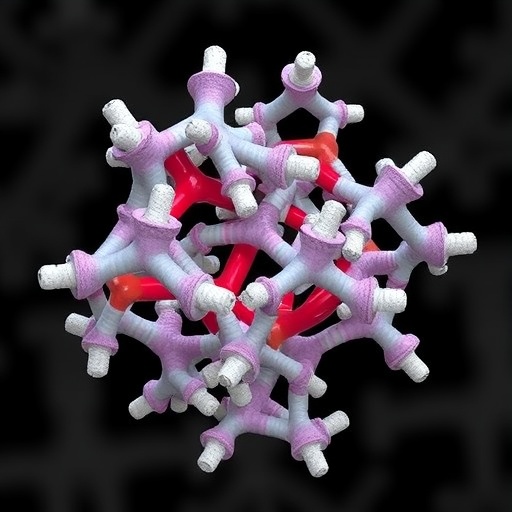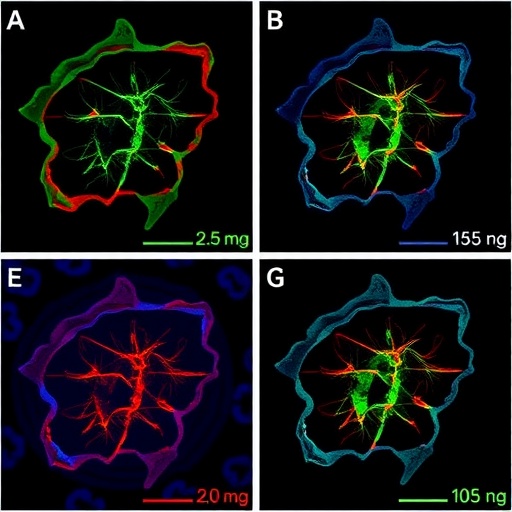WASHINGTON, D.C., March 21, 2017 — For the last two decades, magnetic tunnel junctions (MTJs) have played a central role in spintronic devices such as read heads of hard disk drives and nonvolatile magnetoresistive random access memories (MRAMs), and researchers are constantly working to improve their performance. One of the most prominent achievements that accelerated the technology's practical applications was the realization of giant tunnel magnetoresistance (TMR) ratios by using rock-salt type MgO crystalline barrier. Now, in an article appearing in this week's issue of Applied Physics Letters, from AIP Publishing, a Japanese team of researchers has succeeded in applying MgGa2O4 to a tunnel barrier, the core part of an MTJ, as an alternative material to more conventional insulators such as MgO and MgAl2O4.
An MTJ has a laminated structure consisting of a nanoscale insulating layer, called a tunnel barrier, sandwiched between two magnetic layers. One of the most important performance indexes of an MTJ is the tunnel magnetoresistance ratio (TMR ratio), the magnitude of resistance change. Magnesium oxide (MgO) is commonly used as a tunnel barrier since a large TMR ratio can be easily obtained.
"In order to widen the application range of MTJs further, we wanted to greatly tune the MTJ properties by replacing the tunnel barrier material," said Hiroaki Sukegawa, a scientist at the National Institute for Materials Science in Japan. "Particularly, for many MTJ applications, we need to have a large TMR ratio and low device resistance and for that we chose a tunnel barrier material with a low band gap."
The team selected semiconducting MgGa2O4, which has a band gap much lower than the conventional MgO insulator, and used existing technology to make an ultrathin MgAl2O4 layer to achieve the parameters they were looking for.
The biggest challenge was obtaining a high quality MgGa2O4 layer with defect-free interfaces since that is essential to achieving a large TMR ratio.
"We first attempted an oxidation method using an Mg-Ga alloy layer for the MgGa2O4 layer preparation however, this process also caused significant oxidation on the surface of the magnetic layer under the Mg-Ga, and the resulting fabricated structure did not function as an MTJ device," Sukegawa said. Inspired by their recent work on a high quality MgAl2O4 fabrication, the team then tried a direct sputtering method; the MgGa2O4 layer was formed by radio frequency sputtering from a high-density MgGa2O4 sintered target to reduce the interfacial over-oxidation.
This new method was very effective in producing a high quality MgGa2O4 tunnel barrier with extremely sharp and defect-free interfaces. It was a pleasant and unexpected surprise.
"We did not expect that we could construct an MTJ showing a large TMR ratio using MgGa2O4 in such a short time since there were few tunnel barrier materials capable of providing the large TMR ratio at room temperature that we were looking for, " Sukegawa said..
This work demonstrates that, contrary to past understanding, MTJ tunnel barriers can be "designed." It was believed that tuning the physical parameters of the tunnel barrier while maintaining large TMR ratios was nearly impossible. These results strongly indicate that various physical properties of the tunnel barrier can be designed by selecting the composition of spinel based barrier materials as necessary while achieving efficient spin-dependent transport (i.e. large TMR ratio).
While there is still more work to be done to achieve larger TMR ratios, these results open the possibility of using "tunnel barrier design" with various spinel oxides to create new spintronic applications.
###
The article, "MgGa2O4 spinel barrier for magnetic tunnel junctions: Coherent tunneling and low barrier height," is authored by Hiroaki Sukegawa, Yushi Kato, Mohamed Belmoubarik, Pohan Cheng, Tadaomi Daibou, Naoharu Shimomura, Yuuzo Kamiguchi, Junichi Ito, Hiroaki Yoda, Tadakatsu Ohkubo, Seiji Mitani and Kazuhiro Hono. The article will appear in the journal Applied Physics Letters March 21, 2017 (DOI: 10.1063/1.4977946). After that date, it can be accessed at http://aip.scitation.org/doi/full/10.1063/1.4977946.
ABOUT THE JOURNAL
Applied Physics Letters features concise, rapid reports on significant new findings in applied physics. The journal covers new experimental and theoretical research on applications of physics phenomena related to all branches of science, engineering, and modern technology. See http://apl.aip.org.
Media Contact
Julia Majors
[email protected]
301-209-3090
@jasonbardi
http://www.aip.org
############
Story Source: Materials provided by Scienmag




